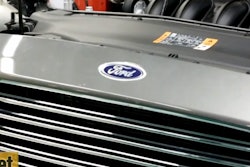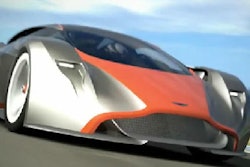A hot rod enthusiast tinkers with the hardware under the hood because juicing up an engine gives his car extra power and performance — at least that's what the Beach Boys used to sing about. These days there’s another kind of tinkering going on under the hood — upgrading a car’s mobile computing system to keep it up-to-date with the technology of the marketplace. The challenge for tech companies and automakers alike is that computer hardware and software embedded in a new car can be obsolete in just a couple years. But the owner will drive the car for an average of six to seven years before he trades it in for a new model.
This inherent disconnect between product lifecycles — seven years for an automobile and as little as one year for the mobile device under its hood — is forcing automakers to offer an array of options that “future-proof” a vehicle’s operating system. Add to this development the fact that consumer demand and preferences are changing such that many of them are starting to consider the car as yet another extension of their digital lifestyles. Some cars, like the electric-powered Tesla, make steady upgrades through software updates that are very similar to those found on a smartphone. Tesla has updated its car’s dashboard computing system 12 times so far by allowing drivers to download the new features.
The Telsa isn’t your average car (although all-electric vehicles are rapidly penetrating the market). But more traditional auto companies are also thinking about future-proofing. Instead of streaming software updates, some automakers are building in hardware that can be manually removed and replaced by a sleeker set of microchips. Audi, for instance, unveiled an upgradable Nvidia Tegra technology system at the annual Consumer Electronics Show in Las Vegas this year (I find it a telling reflection of the times that Audi's unveiling wasn't at a major auto show but rather at the CES). The German automaker was quick to tout Nvidia’s modular nature. The idea behind modularity is that a quick visit to an Audi service center can switch out an old processor with a newer one without replacing the car’s entire infotainment system. All while you’re getting a new air filter and an oil change.
The chasm between the lifecycles of a car and a computer is growing wider by the day. The Nvidia Tegra processor that Audi introduced at this year’s CES is two generations ahead of the chipsets in the newest Audi A3s sitting on dealer lots right now. So conceivably you can drive your brand new car right off the lot and back into the service center for a hardware upgrade. That’s what I call a lifecycle discrepancy. But at least the car is built to readily accept that new hardware installation.
Still, at the end of the day, a car is a car — not a handheld smartphone. If a feature on your mobile doesn’t work, you’re disappointed but you can always hit re-dial. If a computer-aided feature fails in your car while you’re barreling down a highway with your children in the backseat, the consequences can be disastrous. It’s why automakers tend to deal with a very select group of technology providers and are hard-sells to any newcomers in this space. Nvidia, by landing the huge Audi deal, is one such newcomer.
Safety is one of many elements that figure into future-proofing infotainment systems. If you step back and look at the scramble to provide up-to-date computer systems in cars, it reveals a lot about how the world’s first driverless car will play out. That’s because those vehicles will have more in common with your smartphone than they will with an internal combustion engine on four wheels. Car companies are also building functionality into their infotainment systems based on century-old marketing standards. For example, just as you can choose to pay extra for a sports suspension system or a two-tone paintjob, there are definite distinctions between the capabilities of the computer in an econobox and in a top-shelf luxury model.
Along those lines, I would expect an original equipment manufacturer (OEM) like Toyota to build complete infotainment functionality into all its cars. But it will enable certain features depending on the model. If you’re in the market for an economically priced Scion, for example, you might get Toyota’s standard infotainment system. A Toyota Camry will get you more features. But Toyota would enable every bell and whistle on the hardware embedded in a high-end Lexus. Having a single operating system allows Toyota to offer different apps and upgradable features to drivers based on the kind of car they’ve bought. The hardware is standard across the board; it’s the software that can be differentiated by the OEM.
Differentiating the features of onboard systems also feeds into the desire of drivers to upgrade to a pricier car model. That’s where the whole lifecycle discrepancy starts to blur. Consumers might rush out to buy a car more frequently than every six years if the assumption is that the onboard computer will be all the more impressive. Modularity indeed has its limits. A car company would rather you upgrade to another car after a few years than to keep your current set of wheels while endlessly replacing the modular operating systems under the hood.
A recent survey said that prospective car buyers place more importance on in-car technology than they do even on power and performance (sorry, hot rod enthusiasts and Beach Boys fans). That’s a huge opportunity for technology providers to convince automakers to allow them to offer their services and apps for drivers. It’s all about ecosystem integrators bringing in the required capabilities and competencies to realize the vision. In turn, more robust computing will allow automakers to monetize onboard vehicle data in new ways — recommending service stops, offering a dizzying selection of pay-as-you-go diagnostics, encouraging use of the company-operated navigational system over Google maps, and even monitoring the air in the cabin for dangerously high temperatures or traces of carbon monoxide.
Consumers have become downright picky when it comes to digital features on the products they buy. Think about it, makers of once-mundane home appliances like refrigerators and washer/dryers are now in the business of marketing high tech appliances. Car owners expect their automobiles to be no less sophisticated. So whatever the feature, automakers that properly future-proof the infotainment capabilities of their fleets are ensuring that a steady stream of digital consumers will be kicking their tires soon.
Venkateswaran Vinod is an Industry Principal with Infosys Engineering Services. His focus area is Connected Vehicle Technologies and he has been advising Auto OEMs, Tier 1s, Insurance providers and hi-tech companies on the technology roadmap, and implementation of connected car programs. He has established and run innovation centers for automakers and Tier1s to experiment new technologies and build prototypes. He can be reached at [email protected]
To read more manufacturing and technology news, sign up for our newsletter. You can also follow Manufacturing Business Technology on Twitter @MBTwebsite.























